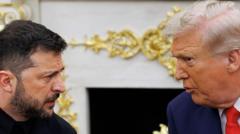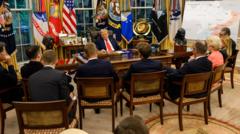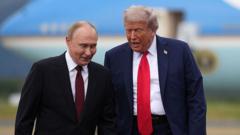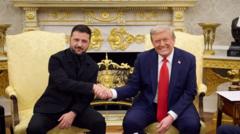Prime Minister Mark Carney of Canada revealed upcoming changes to retaliatory tariffs on U.S. imports, marking a crucial moment in trade negotiations between the two nations.
Canada Taps the Brakes on Retaliatory Tariffs Against the U.S.
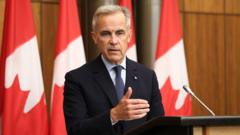
Canada Taps the Brakes on Retaliatory Tariffs Against the U.S.
In a significant shift, Canada announces plans to roll back certain tariffs on American imports while maintaining others, signaling a potential thaw in U.S.-Canada trade relations.
In a press conference on Friday, Prime Minister Mark Carney announced that Canada will soon reduce some of its billions in retaliatory tariffs placed on U.S. goods, though tariffs on auto, steel, and aluminum imports will remain. The announcement follows Carney's recent conversation with U.S. President Donald Trump, their first interaction since missing a recent trade agreement deadline.
Canada instituted a 25% tax on around C$30 billion (approximately $21.7 billion) in U.S. goods, which encompasses items as diverse as orange juice and washing machines. These levies were implemented as retaliation against U.S. tariffs, which currently stand at 35% on non-compliant Canadian products.
To realign trade, Carney affirmed Canada’s decision to align its trade policy with the U.S. by easing tariffs on goods that meet the U.S.-Mexico-Canada Agreement (USMCA) requirements, with changes taking effect on September 1. The White House responded positively, calling the Canadian move "long overdue" and expressing eagerness to further engage in negotiations.
Polling indicates strong support among Canadians for maintaining retaliatory tariffs against the U.S. during Carney’s tenure, as he has advocated for a more aggressive negotiation stance with the Trump administration. However, Carney defended the decision to soften some tariffs, noting that Canada has a more favorable tariff agreement compared to many other countries.
In his remarks, Carney emphasized the importance of sustaining Canada's advantageous position for domestic workers and businesses as trade discussions continue. Key negotiation points will focus on autos, steel, aluminum, and lumber ahead of a planned USMCA review next year.
Currently, the U.S. imposes a 50% tariff on most steel and aluminum imports, while Canada has enacted a 25% tariff on U.S. steel, aluminum, and auto products, which will stay for now. Since his return to the White House, Trump has pursued a global trade agenda characterized by heightened tariffs and aggressive negotiations aimed at securing favorable trade terms for the United States.
Canada instituted a 25% tax on around C$30 billion (approximately $21.7 billion) in U.S. goods, which encompasses items as diverse as orange juice and washing machines. These levies were implemented as retaliation against U.S. tariffs, which currently stand at 35% on non-compliant Canadian products.
To realign trade, Carney affirmed Canada’s decision to align its trade policy with the U.S. by easing tariffs on goods that meet the U.S.-Mexico-Canada Agreement (USMCA) requirements, with changes taking effect on September 1. The White House responded positively, calling the Canadian move "long overdue" and expressing eagerness to further engage in negotiations.
Polling indicates strong support among Canadians for maintaining retaliatory tariffs against the U.S. during Carney’s tenure, as he has advocated for a more aggressive negotiation stance with the Trump administration. However, Carney defended the decision to soften some tariffs, noting that Canada has a more favorable tariff agreement compared to many other countries.
In his remarks, Carney emphasized the importance of sustaining Canada's advantageous position for domestic workers and businesses as trade discussions continue. Key negotiation points will focus on autos, steel, aluminum, and lumber ahead of a planned USMCA review next year.
Currently, the U.S. imposes a 50% tariff on most steel and aluminum imports, while Canada has enacted a 25% tariff on U.S. steel, aluminum, and auto products, which will stay for now. Since his return to the White House, Trump has pursued a global trade agenda characterized by heightened tariffs and aggressive negotiations aimed at securing favorable trade terms for the United States.











